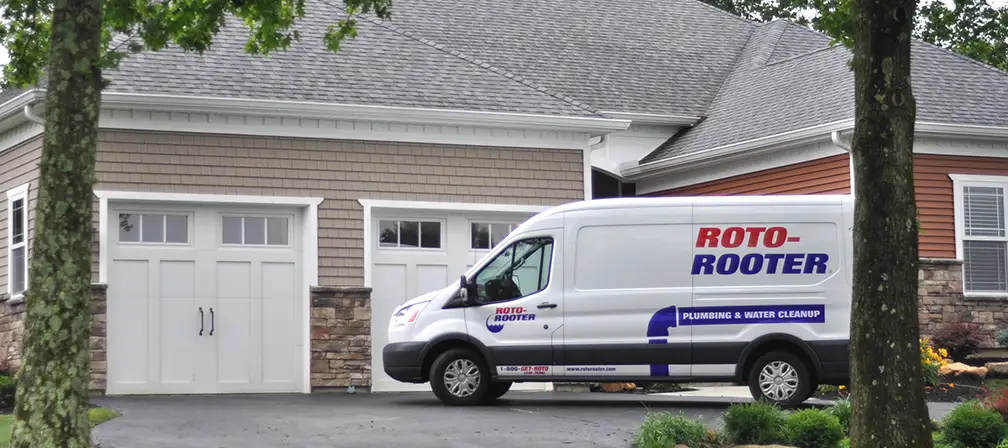Roto-Rooter: Your Round-the-Clock Emergency Plumbing Company
In search of an emergency plumber in Seattle? Look no further than Roto-Rooter. Our experienced plumbers resolve all types of plumbing issues in residential homes and commercial buildings.
Water emergencies can happen at any time. They can occur day or night, on weekends, and even on holidays. Waiting for regular work hours to call for help is not an option when your toilet overflows or your sewer backs up. You need assistance as soon as possible. Roto-Rooter plumbers provide round-the-clock emergency service every day of the year.
When you need the services of an emergency plumbing company in Seattle, contact Roto-Rooter through our online scheduling form or call our 24/7 service line at 206-935-6600.
Roto-Rooter Emergency Plumbing Services
Roto-Rooter's plumbers have a well-earned reputation for quickly responding to and resolving water-related crises in Seattle. Roto-Rooter provides emergency services for both residential and commercial business settings:
Burst or Leaking Pipe Remediation
Clogged Drains
Outdoor Drain Cleaning
Sewer Line Backup Services
Water Heater Repair and Replacement
Toilet and Sink Repair
Expert Sump Pump Services
Precision Leak Detection
Pipe Repair and Replacement
Emergency Water Shut-Off Assistance
Water Damage Restoration

LEAVE PLUMBING TO THE PROS
BECAUSE WITH ROTO-ROOTER, YOU GET MORE THAN A GUARANTEE.
- REPUTATION
Highly-trained professionals since 1935. A job done right by the original experts.
- TRANSPARENCY
No hidden or extra charges for plumbing or drain service on holidays, nights, and weekends.
- EFFICIENCY
Same-day and emergency service 365 days a year.
- QUALITY
Full-service plumbing, drain cleaning, and water cleanup – using state-of-the-art diagnostics and equipment.
- FINANCING
Get it fixed today and take time to pay. Special financing options available.
SPECIAL FINANCING AVAILABLE
We have partnered with Synchrony Bank to offer financing options to make your plumbing repair expenses as convenient and stress-free as possible.
Tips for Handling Plumbing Emergencies
Knowing what to do before a plumbing problem occurs helps minimize damage until your plumber arrives. Below are some straightforward tips for handling plumbing emergencies.
1. Turn off the water supply.
Turning off the water supply is the first step in dealing with any plumbing emergency that involves a broken pipe or overflowing plumbing fixture. Many sinks have shut-off valves located in the cabinet beneath the sink. Toilets usually have shut-off valves beneath them. Turn these valves clockwise to shut off the flow of water.
You may need to turn off the main water valve for more serious problems, such as a burst water supply pipe. This shutoff valve is usually near the front of a residential property, though it can also be located in the garage, in the basement, by the water meter, or within a front closet. It’s a good idea to know where your main shutoff valve is before there is a plumbing emergency. Turning the valve clockwise halts the water supply to the entire building. In commercial settings, main water shutoff valves are typically found along the perimeter or outer walls of the building.
Warning: If your electrical power is on, avoid entering flooded areas to reach the main water valve. Instead, call a plumber and make them aware of the potential hazard, as they are trained to handle such situations.
2. Turn off power and gas.
Water and electricity do not mix well. In the event of a flood, turn off the electricity and gas supply to the structure if you can do so safely. Otherwise, vacate the water-affected area and allow a professional plumber or electrician to manage power and gas shutoffs. It may even be necessary to contact your utility company.
3. Deactivate the water heater.
If your water heater is in a basement or otherwise in danger of becoming submerged by a flood, turn off your water heater if it is safe to do so. Likewise, leaving an electric water heater operational without a water supply increases the risk of the tank overheating or burning out the unit’s heating element.
4. Locate the water source.
Identify where the water comes from. Sometimes, this is easy: A backed-up sink is easy to notice. In other situations, however, you may have difficulty finding the water source. Walls, flooring, or ceilings often hide broken plumbing pipes.
5. Minimize the damage.
If you can contain the spread of water, you’ll limit potential water damage. Use buckets to catch water from leaky pipes and towels to mop up spreading water. For more serious emergencies, such as a sewer backup, your ability to contain the damage will be limited, as dealing with wastewater poses the potential for serious health problems. Leave anything involving gray water (dirty or contaminated water) or black water (sewer-contaminated water) to the professionals.
6. Clear the surrounding area of things and people.
Clearing obstructions from around a plumbing problem helps plumbers get right to work. For instance, if the problem lies with a bathroom sink, take everything out of the sink cabinet. For severe floods or sewer backups, keep people and pets away from the affected area to prevent contact with contaminated water and possible exposure to live electricity.
7. Call an Emergency Plumber Company
Homeowners and facility maintenance personnel can handle minor plumbing issues but should avoid attempting DIY solutions during serious water emergencies. Such efforts, even if well-intentioned, can exacerbate the problem, complicate insurance claims, and endanger people’s health. To learn more, explore 4 Reasons You Need an Emergency Plumber.

